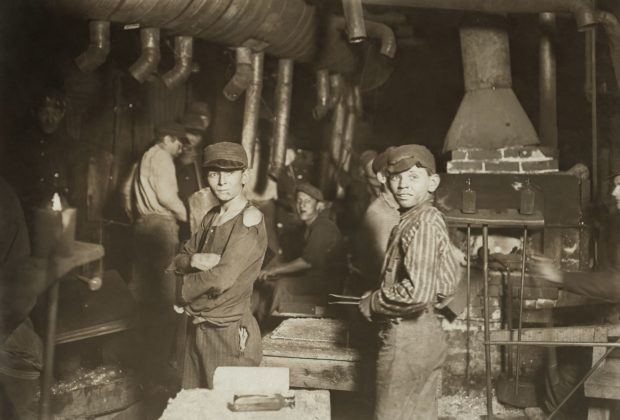[Post updated August 18, 2025]
To most Americans, the first Monday in September means a three-day weekend and the last hurrah of summer– a final outing at the beach before school begins, a family picnic. The federal Labor Day holiday was signed into law by President Grover Cleveland during his second term in 1894.
Since then, organized American labor has seen its ups and downs. Under the administration of President Joe Biden, unions had enjoyed something of a comeback, winning some large victories. President Biden and Vice President Harris had joined the picket lines alongside auto workers–a presidential first. But the election of 2024 reshaped the landscape. A 2024 Labor Department blog celebrating the gains made by unions under President Biden has been removed. Among the victories it heralded:
- The United Auto Workers notched two major victories– new contracts with the Big Three automobile manufacturers and an organizing win at the Chattanooga, Tennessee Volkswagen plant
- Several Hollywood entertainment unions representing actors, writers, production crews, musicians and other craftspeople reached new deals with the film and television industry that contained significant economic advances as well as protections for their members from the increasing use of artificial intelligence
- Labor unions representing pilots and flight attendants delivered on their promises to their members by negotiating contracts that buoyed the economic security of airline industry workers.
- The International Brotherhood of Teamsters reached a new 5-year contract with Anheuser-Busch, boosting pay, benefits, and job security for about 5,000 union-represented employees.
In 2025, the Labor Day landscape is very different. The current administration is trying to roll back union protections for federal workers, as reported in the New York Times:
President Trump expanded his wide-reaching effort to strip union protections from federal employees on Thursday, signing an executive order that commanded roughly half a dozen government agencies to end their collective bargaining agreements with unions representing their employees. New York Times, August 29, 2025
While the national unemployment rate remains low, many working people are struggling with higher costs and an uncertain future. And Artificial Intelligence (AI) has emerged as a new threat to American jobs and careers.
“But now, the spread of A.I. programming tools, which can quickly generate thousands of lines of computer code — combined with layoffs at companies like Amazon, Intel, Meta and Microsoft — is dimming prospects in a field that tech leaders promoted for years as a golden career ticket. The turnabout is derailing the employment dreams of many new computing grads and sending them scrambling for other work.” –“Goodbye, $165,000 Tech Jobs,” New York Times (August 14, 2025)
But as we rethink work and life, it is a most fitting moment to consider how we labor and the history of Labor Day. The holiday was born at the end of the nineteenth century, in a time when work was no picnic. As America was moving from farms to factories in the Industrial Age, there was a long, violent, often-deadly struggle for fundamental workers’ rights, a struggle that in many ways was America’s “other civil war.” (For a complete history of Labor Day, read “The Blood and Sweat Behind Labor Day”)

“Glassworks. Midnight. Location: Indiana.” From a series of photographs of child labor at glass and bottle factories in the United States by Lewis W. Hine, for the National Child Labor Committee, New York. Library of Congress
The first American Labor Day is dated to a parade organized by unions in New York City on September 5, 1882, as a celebration of “the strength and spirit of the American worker.” Their goals were simple: decent wages, an eight-hour workday and the right to organize. Among, other things, these labor organizers and working people wanted an end to child labor.
In 1861, Lincoln told Congress:
“Labor is prior to and independent of capital. Capital is only the fruit of labor, and could never have existed if labor had not first existed. Labor is the superior of capital, and deserves much the higher consideration. Capital has its rights, which are as worthy of protection as any other rights. Nor is it denied that there is, and probably always will be, a relation between labor and capital producing mutual benefits. The error is in assuming that the whole labor of community exists within that relation.”
Today, in postindustrial America, Abraham Lincoln’s words ring empty. Labor is far from “superior to capital.” Working people and unions have borne the brunt of the great changes in the globalized and increasingly computerized economy.
But the facts are clear: In the current economic life of America, the loss of union jobs and the resistance to workers organizing is one key reason for the decline of America’s middle class.